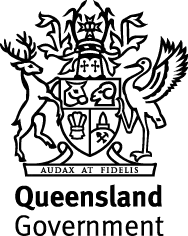Why Microsoft Copilot Isn't the Office Revolution You Were Promised (And What Actually Works)

Remember when Microsoft announced Copilot would transform how we work with Office applications? The promise was tantalising - an AI assistant that would seamlessly integrate into Word, Excel, and PowerPoint, making document creation effortless and intelligent. Fast forward to 2025, and we're witnessing something quite different: a wave of frustrated users, confused workflows, and the growing realisation that sometimes the latest isn't necessarily the greatest.
We've been tracking the Copilot rollout across Australian organisations since its launch, and frankly, the feedback has been mixed at best. From corporate Microsoft Office templates that suddenly don't work properly with AI suggestions, to presentation workflows disrupted by intrusive interfaces, many businesses are discovering that Copilot's reality doesn't match its marketing promises.
If you're reading this whilst wrestling with Copilot frustrations, or trying to decide whether the AI revolution is worth the headache, you're not alone. Let's explore what's actually happening with Copilot - and more importantly, what smart organisations are doing instead.
The Great Copilot Reality Check
The complaints flooding tech forums and Microsoft Community pages paint a consistent picture. Users report that Copilot often fails to perform basic tasks, provides vague suggestions rather than concrete actions, and frequently gets in the way of established workflows. One particularly telling comment we've seen repeated across multiple platforms: "I just want to use Word. Let me write and leave me alone."
The core issue isn't that AI assistance is inherently flawed - it's that Microsoft's implementation often feels forced rather than helpful. Professional PowerPoint templates that previously worked seamlessly now trigger AI suggestions that disrupt established design systems. Custom Microsoft templates that took months to perfect suddenly have AI recommendations overriding carefully designed brand guidelines.
For many organisations, Copilot has created more problems than it's solved. The AI assistant that was supposed to make work easier has instead introduced new variables into previously stable document workflows.
Why Copilot Falls Short of Expectations
The Interface Intrusion Problem
Perhaps the most common complaint we hear is that Copilot feels invasive. Unlike traditional Office features that users can access when needed, Copilot often inserts itself prominently into workflows whether it's wanted or not. The result is a cluttered interface that makes familiar tasks feel foreign.
This is particularly problematic for teams using professional Microsoft Office templates with established workflows. When AI suggestions appear unprompted during document creation, they can disrupt the careful design systems that organisations have spent considerable time and money developing.
The Generic Suggestion Issue
Copilot's recommendations often feel generic rather than contextually relevant. While the AI might suggest reformatting a paragraph or adding a chart, it rarely understands the specific brand guidelines, compliance requirements, or industry standards that govern how your organisation creates documents.
We've seen cases where Copilot suggested design changes that directly contradicted company branding guidelines, or recommended content structures that violated industry regulations. For organisations with sophisticated Microsoft template design services in place, these AI suggestions can feel more like obstacles than assistance.
The Learning Curve Paradox
Microsoft's response to user frustrations has often been that people aren't using Copilot "as intended" - essentially blaming users for not learning the right prompting techniques. But this misses a fundamental point: good tools should make work easier, not require extensive training to use effectively.
Many organisations invested in Copilot expecting it to seamlessly enhance their existing workflows. Instead, they've discovered they need to retrain staff, adjust established processes, and often work around AI suggestions that don't align with their needs.
The Template Compatibility Challenge
One of the most significant issues we've encountered involves how Copilot interacts with existing template systems. Organisations that have invested in custom Microsoft templates often find that AI suggestions conflict with their carefully designed workflows.
Professional presentation design services create templates with specific design hierarchies, brand compliance measures, and user guidance built in. When Copilot suggests alternative layouts or formatting, it can undermine these established systems and create confusion for users who have been trained to follow specific template protocols.
Similarly, Microsoft Office template customisation that includes automation features, locked elements, and compliance controls can be disrupted by AI suggestions that don't understand the reasoning behind these design decisions.
The Performance and Reliability Concerns
Beyond interface and workflow issues, many users report technical problems with Copilot. These include slow response times, frequent errors, and instances where the AI simply fails to work at all. Recent updates have apparently made some of these problems worse rather than better.
For business-critical documents, this unreliability is particularly concerning. When you're working on important presentations or time-sensitive reports, having an AI assistant that might freeze, provide unhelpful suggestions, or simply stop working becomes more hindrance than help.
What Actually Works: The Proven Alternative
Whilst Microsoft focuses on AI-powered solutions, many successful organisations are taking a different approach. Instead of relying on unpredictable AI assistance, they're investing in sophisticated, reliable template systems that provide consistent results without the complications.
Intelligent Template Design Over AI Guesswork
Well-designed Microsoft 365 template solutions can provide many of the benefits that Copilot promises, but with far greater reliability and consistency. Professional templates can include:
• Automated content suggestions based on document type• Built-in brand compliance that prevents off-brand choices• Guided workflows that help users create professional documents• Intelligent automation that works every time
The key difference is that these systems are designed specifically for your organisation's needs rather than trying to be all things to all users.
Predictable Automation Over AI Uncertainty
Rather than hoping AI will understand your requirements, sophisticated template systems can embed your specific needs directly into the tools. This includes industry-specific compliance requirements, brand guidelines, content libraries, and workflow processes.
The result is document automation that works consistently, doesn't require special training, and enhances rather than disrupts established workflows.
Human-Centred Design Over Technology-First Approaches
The most successful document systems we've implemented focus on how people actually work rather than showcasing the latest technology. This means creating templates that feel intuitive, workflows that enhance productivity, and automation that operates invisibly in the background.
The Strategic Advantage of Reliable Systems
Whilst other organisations wrestle with Copilot's inconsistencies, businesses with well-designed template systems enjoy significant competitive advantages. Their teams spend less time fighting with technology and more time focusing on content quality and strategic communication.
These organisations also avoid the training costs, workflow disruptions, and productivity losses that often accompany AI implementations. Instead of hoping AI will eventually learn their requirements, they've built systems that already understand exactly what they need.
Consistency Without Compromise
Professional Microsoft Office templates provide the consistency that Copilot promises but rarely delivers. Every document follows established brand guidelines, compliance requirements are automatically enforced, and users can focus on content rather than formatting decisions.
Scalability Without Surprises
Unlike AI systems that might behave differently depending on updates or server availability, well-designed templates provide predictable results regardless of when or where they're used. This reliability is particularly important for organisations with global teams or strict document standards.
Looking Beyond the AI Hype
The challenge with Copilot isn't that AI assistance is inherently bad - it's that Microsoft's implementation often prioritises showcasing AI capabilities over solving real business problems. The result is a tool that feels more focused on demonstrating technology than enhancing productivity.
For organisations serious about document efficiency, the smarter approach is often to invest in proven systems that deliver consistent results. This doesn't mean avoiding innovation - it means choosing solutions that prioritise reliability and user needs over technological novelty.
The Template-First Strategy
Rather than hoping AI will eventually understand your requirements, organisations can build those requirements directly into their document systems. This creates tools that work exactly as needed, every time, without the uncertainty that comes with AI-powered solutions.
Professional Microsoft template specialists understand how to create these systems, embedding everything from brand compliance to workflow automation into templates that enhance rather than complicate document creation.
Making the Right Choice for Your Organisation
If your organisation is considering Copilot, or if you're already struggling with its implementation, the key question isn't whether AI assistance is valuable - it's whether the specific implementation serves your actual needs.
For many organisations, the answer involves focusing on reliable, proven solutions rather than chasing the latest technological trends. This means investing in template systems that provide consistent results, enhance existing workflows, and support your team's productivity rather than creating new complications.
The Pragmatic Path Forward
The most successful organisations we work with take a pragmatic approach to document technology. They evaluate tools based on results rather than features, prioritise reliability over novelty, and choose solutions that enhance their existing capabilities rather than requiring wholesale changes to established workflows.
This often means investing in sophisticated template systems that provide AI-like benefits - automation, guidance, consistency - without the unpredictability and learning curve that comes with current AI implementations.
Ready to explore what reliable document automation actually looks like? Our template health check questionnaire can help you assess whether your current systems are delivering the efficiency and consistency your organisation needs. We'll show you how professional Microsoft Office templates can provide the benefits you're looking for without the frustrations you're experiencing.
Because ultimately, the goal isn't to use the latest technology - it's to create documents efficiently, maintain consistent standards, and support your team's productivity. Sometimes the best path forward is the one that actually works.
Tired of fighting with Copilot's inconsistencies? Complete our template health check and discover how professional Microsoft Office templates and presentation design services can deliver the reliability and efficiency your organisation actually needs. Let's build document systems that enhance your work rather than complicate it.
who we work with





.svg)
.svg)
.svg)
.svg)







%20(2).avif)



.svg)



















.svg)




















.svg)
.svg)
.svg)
.svg)







%20(2).avif)
The ideaseed difference
We’re fast. Really fast
We know time is of the essence, so we pride ourselves on quick, efficient delivery without sacrificing quality. Whether you have a tight deadline or need a last-minute update, our team is committed to delivering polished results within even the tightest timeframe.
We’re reliable. Always
Our clients trust us because we consistently deliver beautiful, high-quality work. We understand the importance of dependable tools in your business, and we never compromise on quality or functionality.
We go the extra mile
We don’t just meet expectations; we exceed them. We take the time to understand your needs and find creative, tailored solutions that make your work easier and more effective. Our commitment to going above and beyond means you get more than just a template — you get a partner who genuinely cares about your success.

